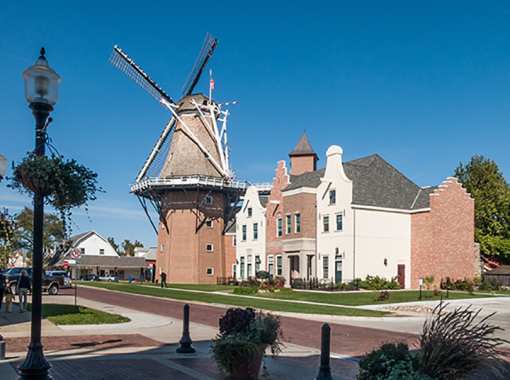History:
In earlier days, the county held a fair annually over a period of about forty years but stopped holding them sometimes during the 1890′s. The old fairground was just south of the present one and signs of the racetrack can still be found. Horse races were a main event in those days.
4-H programs came into existence shortly after World War I. Washington had several 4-H clubs, though not the entire county was organized. Various achievement days were held at different places. Girls' projects were shown in churches and other community rooms. About 1950, the FFA programs were started in some high schools, adding to the numbers of youth activities.
There was a discussion for years about forming a group to promote a more permanent place to hold youth achievement events. A meeting of county leaders and other people was held and from this came an organized fair board. A site was easy to find because the Townsley Park seemed like a likely place.
There were some difficulties which arose but they were soon overcome and the city became the lawful owner of the land it was transferred by rental to the fair board for a period of years.
A two day event was planned for August 8th and 9th of 1951. The only entertainment was the Horse Show put on by the Saddle Club. There were no buildings or water on the grounds. Water was hauled in from town for livestock. There were only a couple of commercial exhibits. This year, and for two years after, was named the Townsley Park Fair.
In 1952, the fair caught on. A sale to raise money was put on by the Kiwanis club and the Junior Chamber of Commerce. The fair board was a very dedicated group and did all the work at the fair for free. Actually, it was several years before anyone was paid to work at the fair, except for some of the judges.
The 1953 fair was still just a two day affair. A new $12,000 show barn had been built and three large tents were rented, and for the first time commercial exhibits were sought, bringing considerable money. There were 25 pens of sheep, 180 cattle, and 155 hogs at the 1953 county fair. It only cost 25 cents to get into the gates at the fair.
The 1954 fair expanded to three days as people in town started to take interest. The Junior Chamber of Commerce sponsored a parade from downtown to the fairgrounds on opening day. A new cattle barn had been built and water was piped to the grounds. Charges at the gate were still 25 cents.
The 1955 fair was now four days long and included a fine horse show that drew a huge crowd. An estimate was made that an average of 1,500 people attended the fair each night. There was also some afternoon entertainment including a western horse show and a baton exhibition. A new show barn was brought into use though tents were still provided for livestock and commercial exhibits.
In 1956 a new exhibit building was constructed and wash racks, fly spraying, gravel on the lanes, and water sprinklers were also added. Girls exhibited in the new barn and the Great American Carnival was on the grounds for all four days of the fair. There was also a tractor rodeo, amateur show, queen contest, band concert, livestock parade, and a dance.
The fair of 1957 reported over 400 hogs being shown and the girls sold cakes they had exhibited at the auction for the first time. The fair of 1958 featured entertainment much like the past years and over 200 hogs and 160 baby beef were sold at the auctions. Season tickets were sold for the first time costing two dollars.
During the fair of 1960, stores uptown closed for half of a day for the fair. Top price for steers was $45 which was paid by Hy-Vee. At the 1961 fair, a record of 4,000 people came to the fair in one day. By 1970, most of the existing buildings had been built on the Townsley Park grounds, now generally called the fairgrounds.
In spite of a 5-inch rain one year, the fair was now a regular yearly event. One year, the Chamber fed 4,500 people at a barbeque. Senior citizens entered a competition with crafts and entertainment. There was a successful rodeo and sanctioned tractor pulls became a favorite of fairgoers. People were hired for much of the work, replacing volunteers. The fair board grew in numbers and turned many of the decisions and arrangements over to the first regular secretary, Mike Orris.
Much of the responsibility of the fair was now on Mike Orris' shoulders. He took care of gate recipes, policy, getting a carnival, hiring entertainers, promoting commercial exhibits, and taking care of the fairgrounds during the year. The fair board president and directors were no longer depended on for many of the jobs the earlier members were.
The fairgrounds now have paved streets, numerous buildings, a big stage, and two outdoor show rings. It has gone through many changes through the years to become what it is today.






